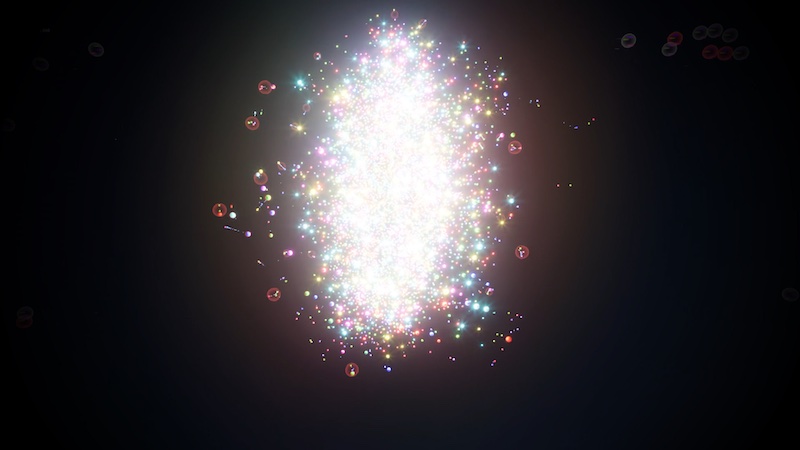
This summer, the Large Hadron Collider (LHC) embarked on a groundbreaking experiment that could reshape our understanding of the early universe. Typically filled with beams of protons, the LHC’s 27-kilometer ring was reconfigured to facilitate its first-ever oxygen–oxygen and neon–neon collisions. Initial results from these experiments, conducted over six days by the ALICE, ATLAS, CMS, and LHCb collaborations, were unveiled at the Initial Stages conference in Taipei, Taiwan, from September 7 to 12.
The experiments aim to delve deeper into the quark–gluon plasma (QGP), a state of matter that mirrors the conditions of the universe mere microseconds after the Big Bang, before atoms came into existence. Historically, the LHC has explored this hot, dense state using collisions between heavy ions like lead or xenon, which maximize the size of the plasma droplet created. However, the recent focus on lighter ions such as oxygen introduces a new dimension to the study of QGP, offering insights into its characteristics and evolution.
Unveiling the Quark–Gluon Plasma
Collisions involving lighter ions, such as oxygen, provide a unique opportunity to investigate the minimum size of nuclei necessary to create QGP. Unlike the more symmetrical shapes of lead or xenon, lighter ions like neon are less regular in shape. A neon nucleus, for instance, is predicted to be elongated like a bowling pin—a theory now substantiated by the new LHC data.
The experiments concentrated on measuring subtle patterns in the angles and directions of particles as the QGP droplet expands and cools. These patterns, known as “flow,” result from minute distortions in the original collision zone. Remarkably, these flow patterns can be described using fluid-dynamics calculations similar to those used for everyday fluids. This allows researchers to probe both the properties of the QGP and the geometry of colliding nuclei.
Flow Patterns and Nuclear Geometry
The ALICE experiment, which specializes in QGP studies, alongside the general-purpose ATLAS and CMS experiments, measured significant elliptic and triangular flow in the oxygen–oxygen and neon–neon collisions. These measurements revealed a strong dependence on whether the collisions were glancing or head-on. The level of agreement between theoretical predictions and actual data is comparable to that for heavier ion collisions, despite the smaller system size.
“The flow in oxygen–oxygen and neon–neon collisions is driven by nuclear geometry, supporting the bowling-pin structure of the neon nucleus,” said a CERN spokesperson. “This demonstrates that hydrodynamic flow emerges robustly across collision systems at the LHC.”
Complementary findings presented by the LHCb collaboration further confirm the bowling-pin shape of the neon nucleus. These results are based on lead–argon and lead–neon collisions in a fixed-target setup, using data recorded in 2024 with its SMOG apparatus. The LHCb team has also begun analyzing the oxygen–oxygen and neon–neon collision data.
Implications for Understanding the Universe
The implications of these findings are profound. By providing fresh perspectives on nuclear structure and the emergence of matter post-Big Bang, these experiments offer a deeper understanding of the universe’s infancy. According to CERN Director for Research and Computing Joachim Mnich, “Taken together, these results bring fresh perspectives on nuclear structure and how matter emerged after the Big Bang.”
This development follows years of research and experimentation aimed at unraveling the mysteries of the universe’s earliest moments. As scientists continue to analyze the data, the potential for new discoveries remains vast. The LHC’s innovative approach to exploring lighter ion collisions not only enhances our understanding of QGP but also sets the stage for future breakthroughs in particle physics.
As the LHC continues to push the boundaries of scientific exploration, the insights gained from these experiments will undoubtedly contribute to a more comprehensive understanding of the universe’s origins. The journey into the depths of the cosmos is far from over, and each new discovery brings us closer to unraveling the secrets of the universe.






